Tributes to Professor Aron Pinczuk
Celebrating the life and legacy of Professor Aron Pinczuk (1939-2022)
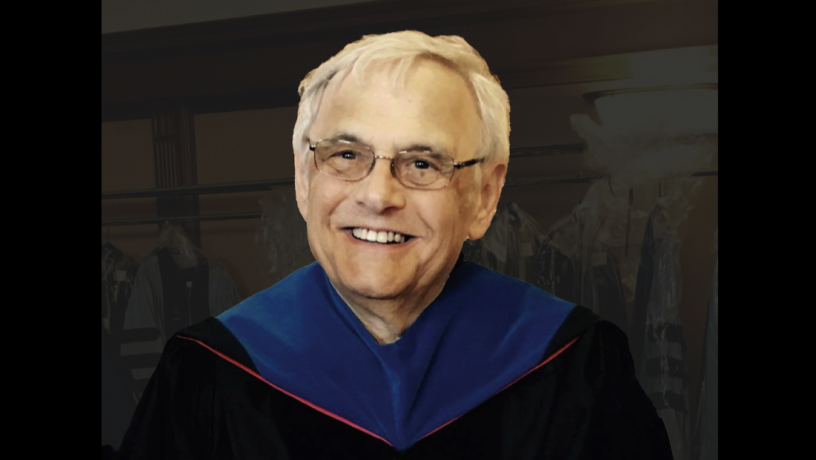
Aron Pinczuk
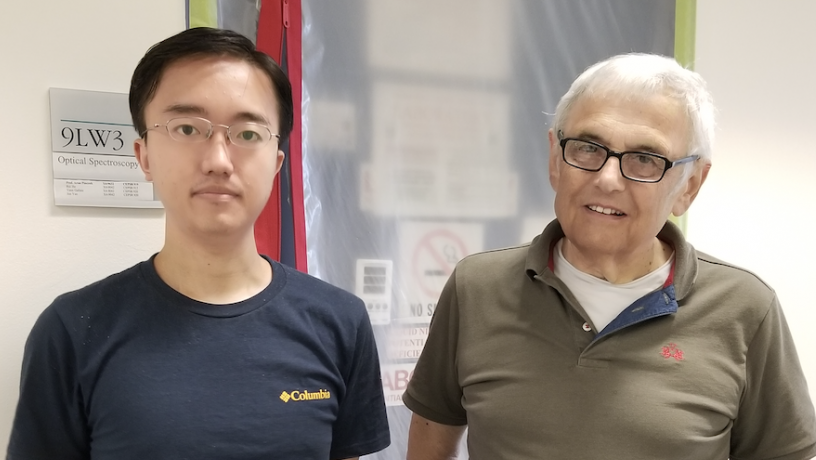
Lingjie Du and Aron Pinczuk (submitted by Ziyu Liu)
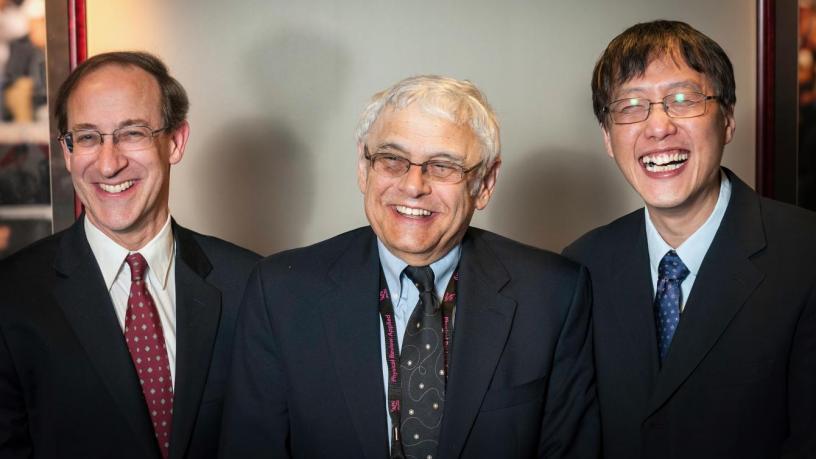
Tony Heinz, Aron Pinczuk, and Philip Kim (photo submitted by Philip Kim)
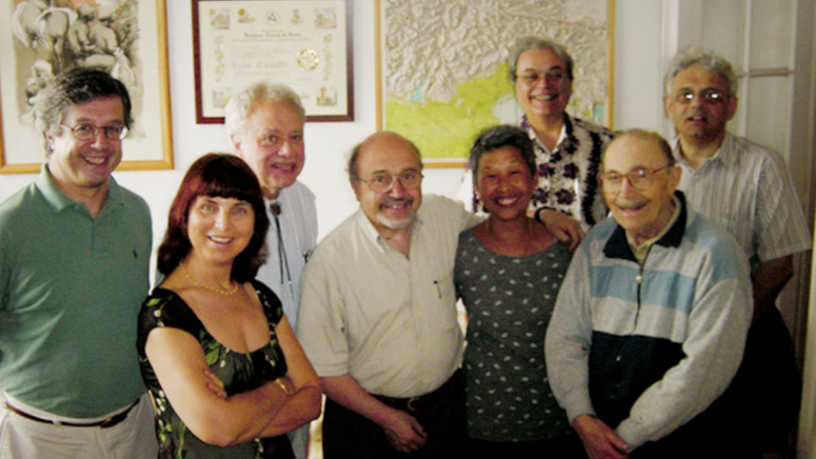
Photo from Erio Tosatti (Aron Pinczuk is on the far right)
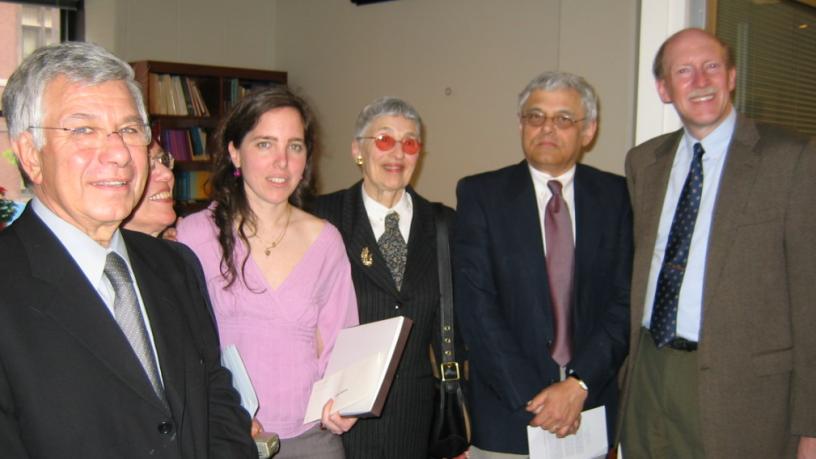
Simon Prize Ceremony - with Mr. & Mrs. Dujovne, Irene Dujovne, Jane Faggen, Aron Pinczuk, and Michael Mauel
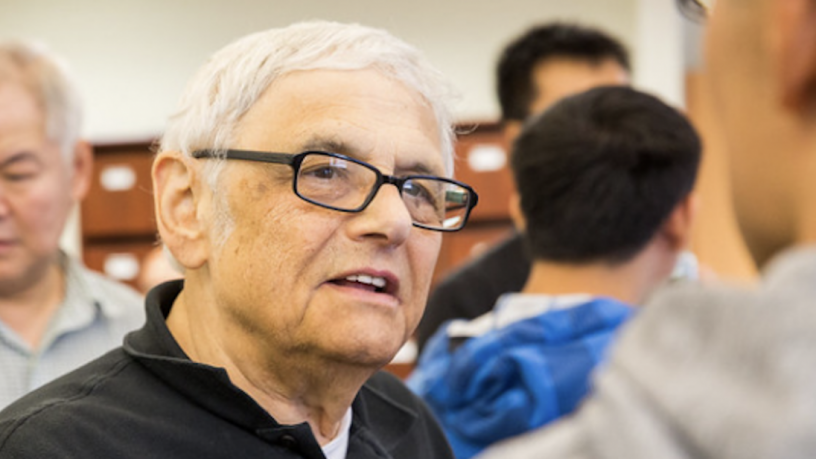
Professor Aron Pinczuk
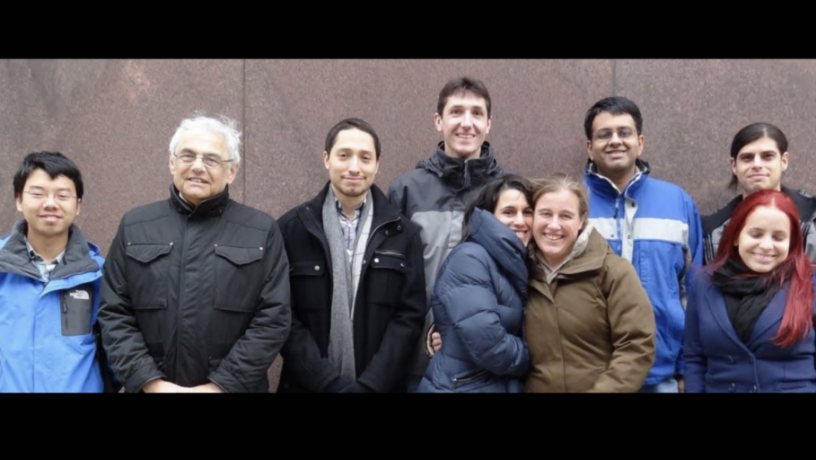
Members of the Pinczuk lab (with friends from the Pasupathy lab) after a farewell lunch in December 2012. (Photo submitted by Ursula Wurstbauer)
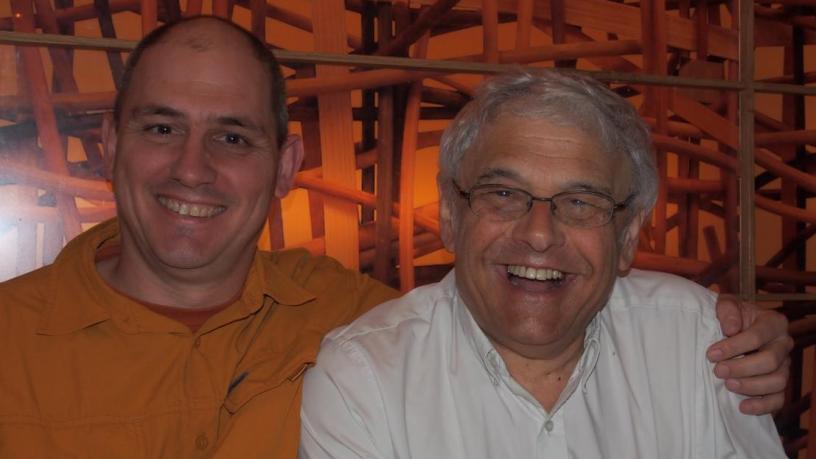
Photo by Jorge M. Garcia
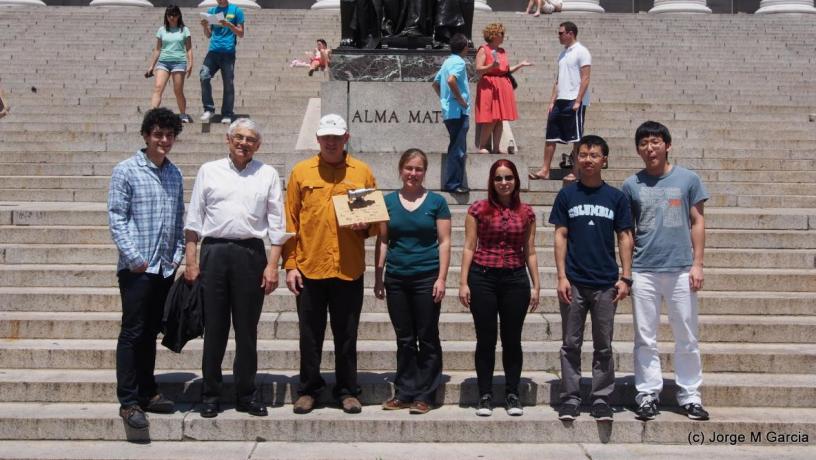
Photo by Jorge M. Garcia
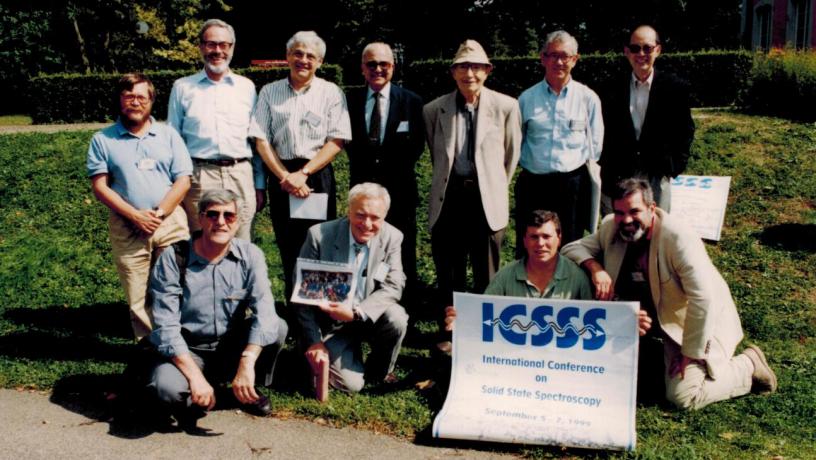
ICSSS 1999
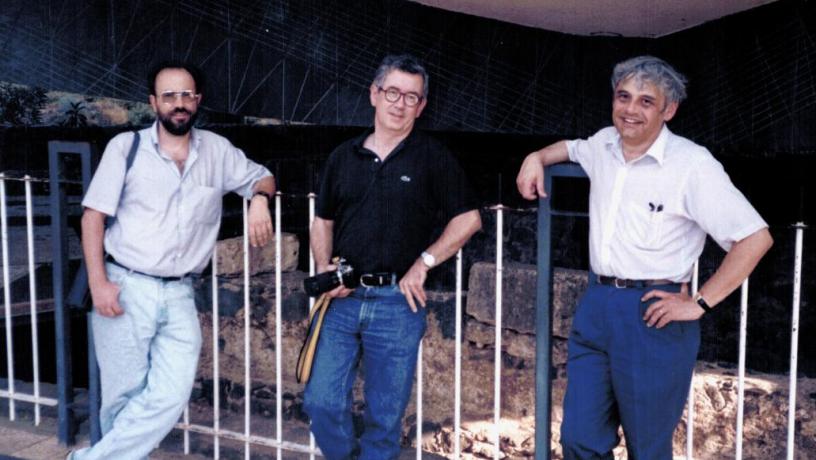
ICPS Jerusalem 1998
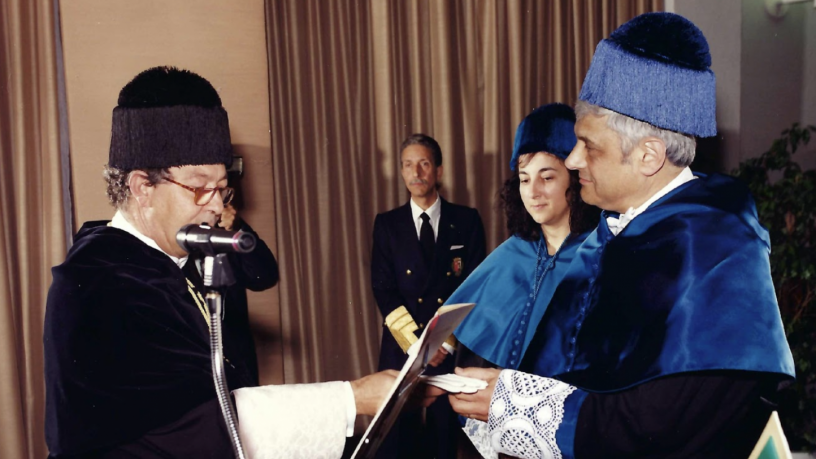
Dr Honoris Causa UA Madrid, 1997
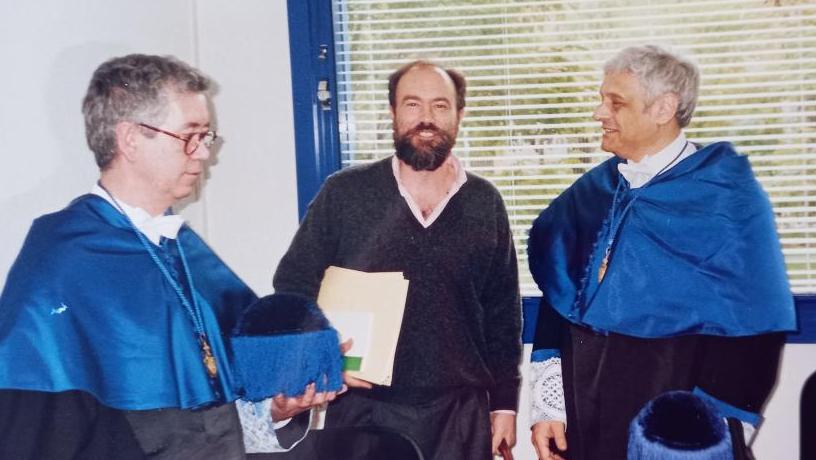
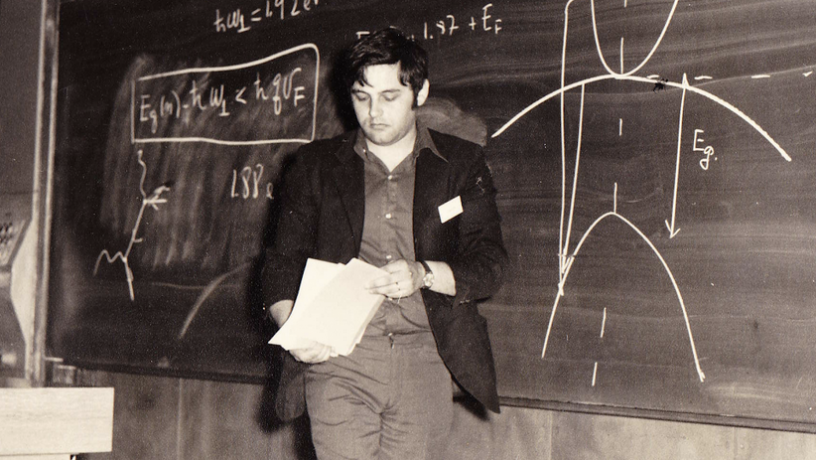
1971 Meeting Paris, 2nd International Conference on Light Scattering in Solids
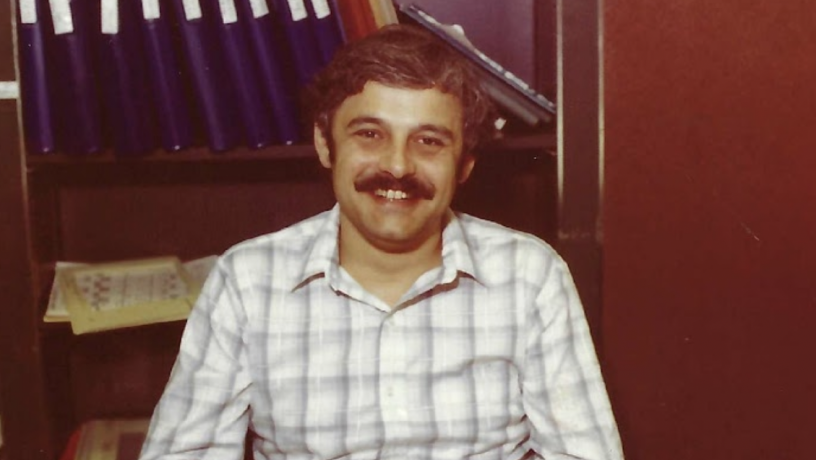
1960’s, possibly Philadelphia
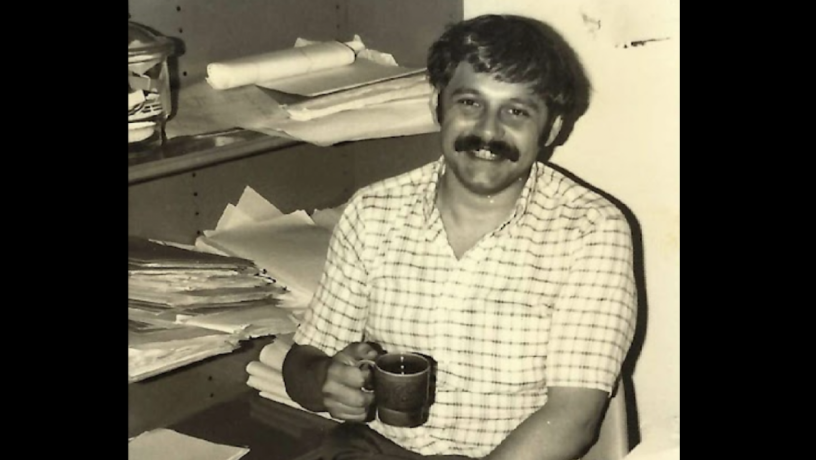
1960's, Buenos Aires or Philadelphia
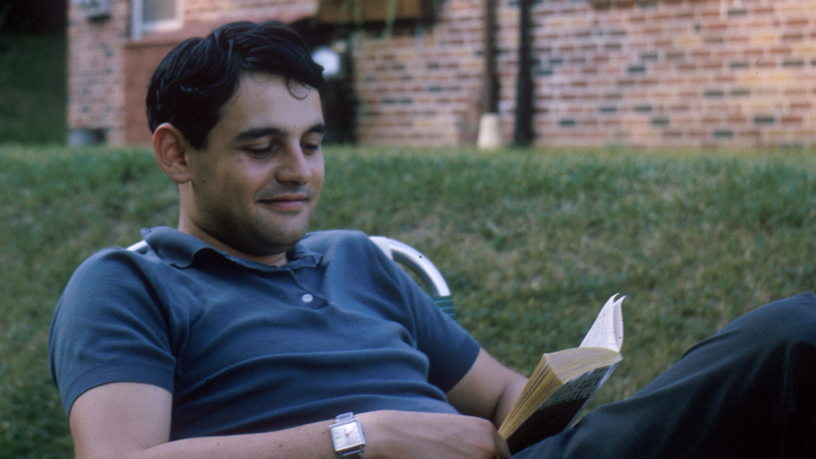
Philadelphia 1966
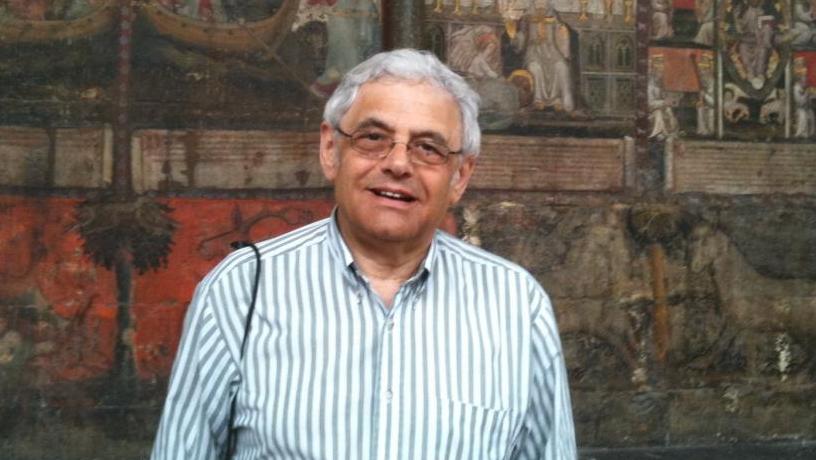
The Science and Life of Aron Pinczuk
The Department of Physics and the Department of Applied Physics and Applied Mathematics at Columbia University hosted a memorial event to honor the life and work of Professor Aron Pinczuk. The Symposium, The Science and Life of Aron Pinczuk, took place on Saturday, October 8, 2022, and featured talks by Aron’s collaborators, students and family.
Roberto Merlin, University of Michigan
Aron Pinczuk: The early days of light scattering in solids at Penn, the return to Argentina and the pioneering work on two-dimensional electrons at Bell Labs
Loren Pfeiffer, Princeton University
My three and one-half decade physics collaboration with Aron Pinczuk
Vittorio Pellegrini, BeDimensional
Aron and me: a wonderful journey in the flatland
Cyrus Hirjibehedin, MIT Lincoln Laboratory; Irene Dujovne, UMass Amherst; & Rui He, Texas Tech University
Aron @ Columbia: The “early” years
Sankar Das Sarma, University of Maryland
Aron Pinczuk: A Friend for 40 Years with Plasmon Modes in Our Minds
Trevor Rhone, Rensselaer Polytechnic Institute
Emergent spin phenomena in the age of artificial intelligence
Ursula Wurstbauer, WWU Münster
Emission is complicated: the beauty of resonant inelastic light scattering
Jainendra Jain, Penn State University
Aron Pinczuk: My Friend and Collaborator
Ana Pinczuk
Reminisces from Aron’s family
Symposium Photos
PInczuk photo slide show
"Today’s memorial symposium brings back memories of many encounters with Aron Pinczuk. He was the pioneer in the field of Raman scattering in quantum Hall systems and always a welcome guest at the Max Planck Institute for Solid State Research in Stuttgart, where together with Manual Cardona he not only helped Raman scattering to flourish, but also shaped the journal Solid State Communication for decades. For him, communication was a very important part of his life, not only in the name of the journal. He also brought people together. The many workshops and conferences he organized provided a unique stage to bring established scientists together with students. The internationality of science was an important concern for him, and despite many personal negative memories, he always worked to ensure that science and research, and above all democracy, had a future not only in his native Argentina. In today’s world, he would certainly have worked harder to ensure that the world will not break up into ideological blocs. I will always remember him as a great scientist and citizen of the world." - Klaus von Klitzing, early supervisor and Nobel Laureate
Tributes
"Reading through these tributes to Professor Pinczuk, I was struck, but not surprised, by the common thread in all of them regarding how kind and thoughtful he was. It bears repeating. When I was the DA in APAM, Dr. Pinczuk was one of the good citizens. He would stop by a few times a week, walking over from his office in CEPSR if only to say hello. I remember his smile and his wry humor. He would take his time, and would chat about whatever was on his mind. He was always concerned about his students and wanted to make sure that they were taken care of. We could reliably count on him to take on volunteer roles in the department, most notably that of chairing the Simon Prize awards, a role he took sometimes reluctantly, but always graciously and seriously. Despite the demands on his time, he was very thoughtful when reviewing the dissertations for these awards and would always stop by and explain his process. Since I’m far from being a scientist, I always appreciated the extra time and explanations. He is missed." - Dina Amin
"Aron was very nice to me when I joined the physics department three years ago. Even though we did not overlap that much, he went out of his way to ask me how I was doing. He was a very kind colleague and I will miss him." - Ana Asenjo-Garcia
"I worked with Aron for about five years as his grant manager. I was very saddened to hear the news of Aron’s passing. What stood out to me was his decency, his patience, and gentle personality. He preferred in-person communication instead of email. He would always climb one floor up from his 9th floor CEPSR office to mine on the 10th floor. Even during Covid, he preferred telephone conversations to deal with whatever issues needed to be taken care of. He asked me to call him Aron when I called him Prof Pinczuk out of respect. It was always easy to converse with him about things other than his proposal, budget and projects. I remember we used to have candid conversations about Argentina, Ethiopia, and all other topics. Just a few months back, sometime in November, we were working on resubmitting the revised budget for his NSF proposal and I was very happy when the award came on November 30th. I remember congratulating him and asking about his Thanksgiving, and replied that he had a wonderful time with family and friends. I will sorely miss him. I cannot imagine how hard his passing must be to his family and I would like to extend my sincere condolences." - Elizabeth Demissie
"I am very surprised and deeply sad for the passing of Aron, since we still discussed the research in the last month. It recalls me a lot of memories about working together with Aron in the past six years from 2016/10 to 2022/1. For me, he is not only a nice mentor but also a good friend." - Lingjie Du
"I am deeply moved by this loss. I would like to say thank you very much, for the last time, to dear Prof. Aron Pinczuk. Thank you for hosting me at your group during 2009-2011. Here I send some touching pictures showing how enjoyable was to work with him. Hope these pictures will show the family how much we loved Prof. Pinczuk. De todo corazón, os acompaño en el sentimiento." - Jorge M. Garcia
"It is with sadness I learnt about Aaron Pinczuk's passing away. Although he joined the Columbia faculty long after I had finished my PhD at Applied Physics, I got to know him during work at Frances Bitter National Magnet Lab, and met him often at conferences during the year. It was always enjoyable to discuss with him, and I appreciated him both as a great physicist and as a friend. I valued very much the time he took when I visited his lab a few years ago during a conference in New York. Please convey my heartfelt condolences to his family as well as to his colleagues and friends at Columbia." - Ulf Gennser
"Aron Pinczuk was the kind of experimentalist who was undeterred when faced with tiny and difficult to detect signals. He could always find another energy denominator to set to zero to resonantly enhance the signal to detectable levels. It was a special thrill for me and my collaborators Phil Platzman and Allan MacDonald when Aron was finally able to gather enough signal to observe the neutral collective magnetoroton mode in the fractional quantum Hall effect. Aron was a kind and gentle man and I remember him fondly. He shall be missed." - Steven Girvin
"As the current head of the Physics Department at the University of Buenos Aires, it is my honor to pay tribute to one of our most distinguished alumni and former faculty members. A brilliant scientist and a generous person, he was also committed to his Alma Mater. This is noteworthy considering that two times he unjustly had to leave the University. First, after “La noche de los bastones largos” he resigned his teaching assistant position to protest against the violent intervention of the University by the dictatorial government. Years later after returning to Argentina from Pennsylvania he joined the faculty as a professor and became the department head in 1974. Again, he had to leave in 1974 and shortly after was forced into exile by yet another dictatorial government. In spite of these events, it can be read from his actions that he never lost the faith in his country and the University of Buenos Aires, his Alma Mater. When the democracy was re-established, he was generous to devote his knowledge, effort, and time to rebuild the scientific community. Over the years, he was a key figure in several committees that advised on science policy, assigned research funds and selected professors and research staff. Altogether, his actions, together with other notable people like him, reshaped our institution, taking it out of darkness and into a new era. In summary, on behalf of the previous heads of the Physics Department and our whole community, I would like to thank you, Aron, for your commitment, your generosity, and your vision." - Hernán Edgardo Grecco
"Aron was a great mentor to me and was a major influence on my life both in science and in general. Our relationship began in 1984 when I was a post doc at MIT. There, Peter Wolff set me up to work with Aron on optical spectroscopy in high magnetic fields. We published 36 journal papers together from 1985 to 1997. We shared hotel rooms at international conferences in many countries. I fondly recall that Aron came up with many of his breakthrough ideas on Sunday afternoons, where I pictured him taking a rest (i.e. nap) at home. We would often talk on the phone on those Sundays. A great achievement of his was perfecting ultra-low-temperature Raman scattering in a dilution refrigerator, enabling him to measure the fundamental excitations of the fractional quantum Hall state. Aron was not only a brilliant researcher, but was a kind, caring and humble human being. He always had time for people and is dearly missed." - Don Heiman
"I was a colleague of Aron for over 20 years. He was a real physicist, who breathed solid state physics---this is a supreme compliment. Aron was humble, friendly, professional, and responsible, and always exhibited the highest degree of integrity. I fully agree with the statement I heard, that Aron was a wonderful person." - Irving Herman
"All of us at Columbia Nano Initiative (CNI) were very saddened to hear of Prof. Pinczuk’s passing. Among the CNI Finance Team, he was undoubtedly one of our favorite faculty members. Unfailingly kind, patient and caring, he would always come to the office to speak with us and provide encouragement in his own inimitable way during stressful times. He had a very attentive way of listening and it made us feel very appreciated. Somehow, even if he dropped by for just a few short moments, and although we might have talked about nothing much at all, we always felt happier after speaking with him. We will really miss his warm and reassuring presence and our hearts go out to his family and friends." - Waichi Ho
"Aron was one of my mentors when I started working at Columbia University as a young faculty member. From him, I learned a lot about teaching and physics. Aron was a world-leading expert in magneto spectroscopy and two-dimensional electron systems, but he was humble and kind and was always eager to help others both personally and professionally. I gained more knowledge about conveying ideas and conducting experiments with utmost dignity from Aron as I collaborated with him on several grant proposals and papers. His enthusiasm and interest in the research he pursued always struck me as impressive. I miss Aron's kind laugh, kind smile, and positive outlook on our future." - Philip Kim
"I first met Professor Pinczuk in solid state physics course and later joined his lab. My advisor impressed me so much by invaluable discussions on numerous topics varying from culture, history, international affairs, to the stories behind the milestones in semiconductor community. Besides his passion about research, he always managed to spare time for any student in need of help. His positive and optimistic attitude uplifts everyone around him. It was like yesterday when he reminded me of enjoying the sunshine as spring awakens. We will forever miss him." - Ziyu Liu
"I knew Aron as the person who first observed the magnetoroton collective excitations of fractional quantum Hall incompressible states, and as my editor in chief working at Solid State Communications. In both roles Aron was always a consensus builder. I can still hear him ending his sentences with ` Isn't it? ' Science will be better if we all now try to me a bit more like Aron. Isn't it? Rest In Peace Aron." - Allan MacDonald
"Many images come to life when I reminisce about Aron: crispy New Jersey mornings filled with baroque music, as we drove to Bell Labs on his Volvo, long Sunday drives to Little Italy to buy some crusty bread and ravioli, elaborate schemes to justify a break for chocolate desert at any time of the day, and of course the many long evenings after dinner in the company of Gladys, Ana, and Guillermo, talking about every possible subject.
But I guess that for this celebration of Aron’s life I should dwell on the lessons I learned from him as a postdoc. In 1985 I arrived at Bell Labs brimming with youthful enthusiasm, an exuberant confidence in my ability to translate ideas and results to well-written papers, a commitment to fight error like Don Quixote, and the willingness to aggressively convey any disagreement. Aron and his lab were so supportive that in a few weeks we accumulated significant results in the area of semiconductor heterostructure band offsets, a controversial topic at the time. But when I started writing up the results, I found that what I thought were my “virtues” could actually represent quite disgusting facets of my personality from Aron’s perspective. For his starting consideration was always to put himself in the shoes of everybody else directly or indirectly cited by the paper, and to meditate very carefully on the impact of each manuscript word on these people. If we were to disagree with them or refute them, this had to be done without eliciting any emotional defensive response. Asserting the Truth by humiliation? This was really out of bounds for Aron. I guess I was reasonably quick to adapt to his standards, but I am still working on making them mine…
Many years after I left Bell Labs I discovered the word that perfectly summed up my experiences with Aron. He was a “mensch”. I had learned the word in Germany before I ever met him, but not in the narrower Yiddish sense that only a mensch with menschlichkeit counts as a mensch. I never told him about my discovery. I am too shy when it comes to expressing feelings. I only hope that during all these years, thanks to his innate ability to see the world from the perspective of others, he could at least sense the love and admiration that I always felt for him." - José Menéndez
"When I first came to Columbia as an assistant professor in 2009, my laboratory was not prepared yet. Aron kindly agreed to let me be his "tenant" and set up my equipment in his lab space which was immediately adjacent to his office. So for the first two years, me and my students saw him nearly every day as we set up our experiments. I remember Aron for many of his wonderful attributes as a physicist and teacher - his wonderful kindness to me and to my students; his hard working nature - he was always in his office when I showed up, and was always there when I left!; and his dedication to his students - I would often see him discussing physics with his students for several hours at a time. Aron continued his kindness to me over the years by teaching me some of the physics he was an expert in, and I continue to interact with some of his group members to this day. He helped me in his position as editor of Solid State Communications to get my first paper from Columbia published. We had many conversations about physics, and he was very generous with his time. Even though he was a gentle person in his personal interactions with people, he was a tough scientist! If he was not convinced of something, he would not move on. His personality and science will be sorely missed." - Abhay Pasupathy
" I first met Aron on January 15th 1996, late afternoon, in front of the Bell labs in Murray Hills. Before that day Aron was for me like a “star" in the semiconductor physics community. I was a 27th year old PhD student. Fabio Beltram, my PhD supervisor at Scuola Normale in Pisa, decided that it was good for me to have a research experience abroad. It was my first trip to the US. Aron came to pick me up with his Volvo car and when he saw me he just smiled (how beautiful it was, is, his smile) and brought me to the “Office” in Summit to get a sandwich. When I remember that precise moment, I always (also now that I’m writing this note) feel something special in my heart. That day signaled the first day of a collaboration between me and Aron that has impacted my career and my personality. After spending one year in Bell labs in 1996, working with him 10-12 hours per day, we collaborated over the years and we met regularly often in airports (our typical meeting started on Saturday morning ending on Monday morning). Paris, Madrid, London, Rome, Munich. On top of that, I was regularly flying to New Jersey 2-3 times per year. He also came to Scuola Normale Superiore a few times. The first visit was in July 1997 when he attended my PhD degree dissertation. During the years, many students of mine came to New York to work with him for some periods of time. In 2008, he helped me to spend a semester at Columbia University. Every meeting with Aron was unique, full of discussion, and pleasant breaks looking for some chocolate! We also organized together several conferences in Italy, Erice and Lucca and in the US (I remember a beautiful one at Penn state). The last one was in 2010. Gladys joined a few of those events. They were all fantastic experiences with many colleagues and friends: Allan MacDonald, Horst Stormer, Sankar da Sarma, Gerhard Abstreiter, Jainandra Jain, Jim Eiseinstein, Carlos Tejedor, Pepe Calleja and many, many others. He introduced me to that community of great people and, of course, to Eli Burstein who I first met during the March meeting in 1994. And I also remember the famous Adriatico conferences mentioned by Erio. Aron had an influential and humble lifestyle, He was brilliant, ironic, simple, crisp. My very last contact with him was just after last Christmas. He wrote to me that he was busy with calculating final grades of exams. We agreed to have a zoom meeting. This never happened, unfortunately. Life is a path. I’m proud and feel fortunate that Aron gave to me the opportunity to bring my path close to him for such a long time. I will never forget Aron." - Vittorio Pellegrini
"I am deeply saddened to learn of the passing of Prof. Pinczuk. I only worked at APAM for a short time, but I distinctly remember his kindness and willingness to go above and beyond for students. He was the type of person who, when passing by my desk, would stop to ask how my day was. Running into him always brightened my day. I am sure you are getting tributes from people who knew him much better and longer than I did, but I just wanted to say how much I enjoyed working with him. He will be sorely missed. My sincere condolences to his family." - Jessica Pierson
"I first met Aaron at Bell Labs in 1985 when I started my career at Bell Labs. Bell Labs was a glorious place to work but it was also somewhat harsh and competitive. Aaron was kind and supportive from the beginning. He was a truly gracious person. When I arrived at Columbia University I was delighted to walk past his office and reestablish our friendship. Aaron will always be remembered as an exemplar for human kindness." - Sharon Sputz
"Prof. Pinczuk was world renowned for his research. Despite his immense stature, he was always kind and friendly to graduate students. While I never worked in Prof. Pinczuk's lab, he was involved in my PhD from the very beginning to the very end. On my way in, he was the instructor for my first condensed matter physics class at Columbia. On my way out, he served on my thesis committee. I'm grateful to have known him during my time at Columbia." - Sai Swaroop Sunku
(first of two messages) "I am writing in shock and grief at the news of Aron’s passing. I feel a kinship. Aron and I were both part of Eli Burstein’s broad “family” — some like Aron his real students, some like me sort of picked up and adopted en route. I believe I first met Aron in Stuttgart 1974, while he was visiting Cardona at the Max-Planck Institute, and I the University. Decades later, when Eli played with Stig Lundquist a big role in ICTP Trieste, inventing and helping us organize the AdriaticoResearch Conferences, Aron joined the gang. In time, Aron eventually became the key promoter and organizer of all up to the very last high level Adriatico Conferences. His world class scientific standards, generous personality, and first hand knowledge of developing country science were a unique asset in that role. Many physicists out there who were young participants at ICTP 15-20 years ago could ideally witness that. I attach a picture taken at my home on one of these occasions, together with Roberto Car, my wife Rita, Manuel Cardona, Giacinto and GiokLan Scoles, me, and Eli Burstein. Ten years ago, when my mathematician son Valentino spent a few years in Columbia, that gave me a fresh chance to get together and enjoy Aron’s friendship and physics again, now in his own territory. Finally, when Eli passed away less than five years ago, Aron got me involved in the joint writing his National Academy of Science Memoir, with James Kikkawa, Gene Mele, and Arjun Yodh. Even in that sad but solemn and loving goodbye act, Aron showed his big heart. A heart that never failed so long as it worked. Farewell Aron, you will not be forgotten." - Erio Tosatti
(second of two messages) "I feel a kinship. Aron and I were both part of Eli Burstein’s broad “family” — some like Aron his real students, some like me sort of picked up and adopted en route. I believe I first met Aron in Stuttgart 1974, while he was visiting Cardona at the Max-Planck Institute, and I the University. Decades later, when Eli played with Stig Lundquist a big role in ICTP Trieste, inventing and helping us organize the AdriaticoResearch Conferences, Aron joined the gang. In time, Aron eventually became the key promoter and organizer of all up to the very last high level Adriatico Conferences. His world class scientific standards, generous personality, and first hand knowledge of developing country science were a unique asset in that role. Many physicists out there who were young participants at ICTP 15-20 years ago could ideally witness that. I attach a picture taken at my home on one of these occasions, together with Roberto Car, my wife Rita, Manuel Cardona, Giacinto and GiokLan Scoles, me, and Eli Burstein. Ten years ago, when my mathematician son Valentino spent a few years in Columbia, that gave me a fresh chance to get together and enjoy Aron’s friendship and physics again, now in his own territory. Finally, when Eli passed away less than five years ago, Aron got me involved in the joint writing his National Academy of Science Memoir, with James Kikkawa, Gene Mele, and Arjun Yodh. Even in that sad but solemn and loving goodbye act, Aron showed his big heart. A heart that never failed so long as it worked. Farewell Aron, you will not be forgotten. - Erio Tosatti
"I deeply regret the loss of Aron Pinczuk. I never collaborated directly with him, but I benefited from his essential contributions to the understanding of light scattering in semiconductors, followed his meticulously written papers on 2D electron gases, and am aware of his enormous professionalism, thoroughness and enthusiasm with physics. It was also a pleasure to enjoy brilliant moments with him, Gladys and mutual friends, and to joke with him about his passion for chocolate cakes. H you will missed and remembered." - Luis Viña
"Prof. Pinczuk’s dedication to science was truly inspiring. However most impressive was his true care for the person behind. By difficulties in the lab, he questioned the approach he proposed and if the person experiencing the difficulties is happy with the project or would be passionate for some different aspects of science. During long measurements runs he supported all potential needs, including him providing snacks and or he brought his tablet to the lab to follow the soccer world-cup games together. Memorable were all the intense and highly enjoyable science meetings with truly dark swiss chocolate to keep the brain running. I feel so much gratitude that I was allowed to work as a postdoc with Prof. Pinczuk. He made me the scientist and person I am today. Aron was more than a mentor. He will be always remembered. I miss him." - Ursula Wurstbauer
"Aron Pinczuk is about twice of my age; I did not realize that until I saw the announcement of his passing away. Despite of this difference in age, we actually have an indirect link through Bell Labs. In the 1980s and 90s Aron was working on compound semiconductors in Bell labs at the Murray Hill site and was a close colleague of my PhD advisor Federico Capasso, who was then also worked on semiconductor devices. Because of this indirect link, I feel a special attachment to Aron. I recall that when I was first interviewing for the faculty position at APAM almost 10 years ago, I had a very pleasant conversation with Aron. I remember talking with him about low-dimensional semiconductors and bandstructure engineering of devices, subjects that were quite familiar to both of us. I felt quite warm and at home at that moment when speaking to a person using the same technical language, probably because of the Bell labs link. It was like we were tuned to the same frequency. The conversation with him was so easy despite our difference in age. That was my first impression of Aron. Later on, Aron has been the committee member of some of my students, and we have both been committee members for students of other faculty members. Serving in those committees, Aron always asked intriguing questions and sometime thought-provoking ones. While in charge of the Simon Memorial Prize for the best PhD thesis work, Aron was quite thorough in gathering information of nominees, and his assessment and decision have always been quite fair. In short, Aron was a superb colleague very supportive of younger generations of colleagues and students. He was a towering figure in his field but also a humble person to interact with." - Nanfang Yu
MY TEACHER ARON PINCZUK
by Peter Y. Yu
The passing of Aron Pinczuk marks the end of a “dynasty” in Solid State Physics (or SSP. The name of this field was later changed to Condensed Matter Physics). The “grandfather” of this dynasty was Elias Burstein (also known lovingly by all as Eli) who was Aron’s thesis advisor at UPenn. One of Eli’s many legacies in SSP was the journal Solid State Communication (or abbreviated as SSC) which he founded and ran as the Editor-in-Chief for many years. When Eli retired, he passed the “baton” to Manuel Cardona who considered Eli as his mentor. Finally, when Cardona retired, Aron became the Editor-in-Chief of SSC.
I was lucky enough to observe how these three pioneers of SSP shaped this field and to learn from all three. Although I never took a course from Aron I consider him as one of my teachers in the field of Light Scattering Spectroscopies. In the same way, I regard Eli as my teacher while I was never his student.
To explain how all this happened, I have to start with some history. In 1967 I was accepted as a graduate student by the Physics Department at Brown University after receiving all my educations in Hong Kong. Having never left Hong Kong before that time, I thought Rhode Island was a real island in north America. I was lucky to be at Brown at the right time. In the 1960’s Cardona had already established himself as the authority on Modulation Spectroscopies and made Brown a center in Solid State Spectroscopies. One of Eli’s daughters was an undergraduate student at the Pembroke College of Brown, so Eli was a frequent visitor to Brown at that time. Very quickly, Eli identified Cardona as a rising star and invited him to Penn as a Visiting Professor. Eli was already a leader in SSP at that time. Single-handedly, he has established the Physics Department at Penn as one of the best in SSP in the country. His group at Penn was second to none in Light Scattering Spectroscopies. In 1969 Cardona accepted me into his group to start my career as a Solid State spectroscopist. Around this time, Cardona and Eli decided to collaborate by combining Light Scattering and stress to study semiconductors like Si and Ge. Aron was a graduate student in Eli’s group at that time so he came often to Brown with Eli to work on the effect of stress on the Raman spectra of semiconductors. A paper entitled: “Effect of static uniaxial stress on the Raman spectrum of silicon.” Coauthored by : E.Anastassakis, A.Pinczuk, E.Burstein, F.H.Pollak and M.Cardona appeared in SSC 8, 133 (1970). Sadly, all of the authors on this classic paper have now passed away!
Although Aron and I were students in two campuses hundreds of miles apart, we became friends and our lives crossed path many times in the more than half century that we knew each other. I was a late comer to the field of Light Scattering Spectroscopies so Aron was my teachers in this field. I started working on light scattering when I became a postdoctoral fellow in Ron Shen’s group at Berkeley. My task was to use a tunable dye laser to perform resonant Raman scattering (or RRS) in semiconductors. Our goal was to study both excitons, phonons and their interaction using this new technique. The entire process is usually broken up into these steps: (1) light excites the exciton, (2) the exciton is scattered by the phonon and (3) the exciton is converted to light again which emerges from the sample. The conventional wisdom at that time was to tune the laser through the exciton resonance and from the enhancement of the Raman scattering cross-section to learn something about the exciton-phonon interaction. In a seminal paper Aron and several other coauthors from Eli’s group[E. Burstein, D. L. Mills, A. Pinczuk, S. Ushioda: Exciton-enhanced Raman scattering by optical phonons. Phys. Rev. Lett. 22, 348–352 (1969)] pointed out that the correct way to treat this problem is to consider the RSS process as the inelastic scattering of exciton-polaritons (a coupled wave in which the exciton wave is entangled with the electromagnetic wave). In other words, the light enters the sample surface as an incident exciton-polariton. Inside the sample the exciton-polariton is scattered by phonons before emerging from the sample again as the scattered photon. This elegant idea turned RRS into the most powerful technique for studying exciton-polaritons. This new approach led other theorists, such as Joseph Birman of the City College of New Yor, to propose the use of resonant Brillouin scattering to map out the dispersion of exciton-polaritons. I spent at least more than 10 years of my research career exploring the application of RRS to probe excitons-polaritons and exciton-phonon interactions.
Another area of my research which has been impacted by Aron’s work was the use of Raman scattering to probe single-particle electronic excitations in solid state plasmas. Aron was well-known for his light scattering study of the two-dimensional electron gas within the Fractional Quantum Hall regime (for this work he was awarded the Oliver Buckley Prize of the American Physical Society). Actually, he did extensive study of electronic excitations (both collective and single-particle) in heavily doped semiconductors. In the 1980’s, when high power picosecond lasers became commercially available, I was interested in the generation of hot electrons and hot phonon in semiconductors when illuminated by such high power lasers. The earlier work by Aron on electronic Raman scattering suggested that light scattering is a powerful technique to probe both the phonons and electrons excited by these short laser pulse at the same time. Using this approach, my group was able to demonstrate that the excited electrons and phonons initially reached different temperatures before achieving thermal equilibrium via electron-phonon interaction.
I was lucky to have found many great teachers in my career. Aron was not only one of my earliest teachers, he was the one who inspired me to go into light scattering spectroscopies. He was a gentle, approachable and wonderful friend with a good sense of humor. He will be greatly missed.
